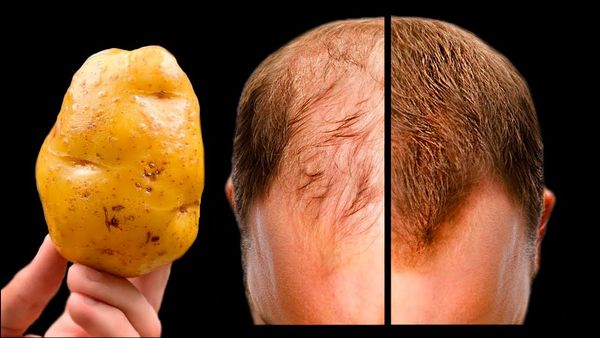Most of us react the same way when we see a bug in our house—either squish it immediately or grab something to toss it outside. But what if I told you there’s one insect you should actually leave alone if you spot it in your home?
Meet the house centipede (Scutigera coleoptrata). With its long, spindly legs and lightning-fast movements, it might look like something straight out of a horror movie, but this little creature is one of the best natural pest controllers you can have in your home.
So before you reach for a shoe, let’s take a closer look at why you might want to let the house centipede stay.
What Is a House Centipede?

The house centipede is a harmless yet incredibly effective predator that preys on many of the insects we actually don’t want inside our homes. These include:
- Spiders
- Cockroaches
- Termites
- Ants
- Bedbugs
- Silverfish
- Flies
Unlike most centipedes that prefer outdoor environments, house centipedes thrive indoors and tend to stick to damp, dark places like basements, bathrooms, and attics.
Now, I get it—these guys don’t exactly win any beauty contests. But trust me, once you understand how beneficial they are, you’ll think twice before killing one.
Why You Should Never Kill a House Centipede
1. They Are Natural Pest Exterminators
House centipedes are nature’s built-in pest control. Instead of using harmful chemicals or expensive exterminators, these little guys hunt down and eliminate unwanted pests for you.
Video : House Centipedes – What you need to know!
How do they do it? Their speed and venomous legs make them expert hunters. They don’t build webs or traps—they actively go after their prey, ensuring that other insects don’t stand a chance.
2. They Are Completely Harmless to Humans
Let’s clear up a common misconception—house centipedes are not dangerous to people.
Yes, they have venom, but it is only used to paralyze their prey. Their venom is too weak to affect humans, and they rarely bite. Even if they do, the worst you might feel is something similar to a mild bee sting.
That being said, house centipedes prefer to run away rather than confront humans. They don’t want anything to do with us; they just want to feast on the insects that invade our space.
3. They Keep Other Bugs in Check
Think of house centipedes as your personal insect bodyguards.
By keeping populations of cockroaches, termites, and other pests low, they actually help maintain balance inside your home. If you start seeing more house centipedes, it might actually be a sign that you already have a pest problem—and they’re just trying to help.
4. They Don’t Damage Your Home
Unlike termites or carpenter ants, house centipedes do not chew on wood, fabrics, or food. They have no interest in anything other than hunting insects. So unlike some other house pests, they’re not going to cause structural damage or ruin your belongings.
Where Do House Centipedes Hide?

If you’re wondering why you don’t see house centipedes often, it’s because they prefer to stay hidden in dark, humid areas. They typically hide in:
- Basements
- Bathrooms
- Under sinks
- Attics
- Closets
- Behind furniture
If you see one running across your floor, chances are it was just out hunting for food and not trying to invade your space.
How to Make Your Home More Centipede-Friendly (Without Letting Them Take Over)
Want to let house centipedes do their pest control job without feeling like you’re living in a bug-infested horror movie? Here’s how to coexist peacefully with these helpful critters:
1. Avoid Using Insect Sprays
Most commercial bug sprays will kill house centipedes along with other pests. If you’re serious about keeping them around for pest control, skip the sprays and opt for more natural solutions to deal with problem insects.
2. Reduce Moisture in Your Home
House centipedes love humid environments. If you have damp areas like basements or bathrooms, using a dehumidifier can help reduce their numbers without eliminating them completely.
Video : Just me holding a House Centipede
3. Seal Up Entry Points for Other Bugs
If you’re noticing a lot of centipedes, it could be a sign that other bugs are getting into your home too. Seal up cracks, fix leaky pipes, and eliminate other pests so your centipede population doesn’t get out of control.
4. Relocate Them If You Must
Not comfortable sharing your home with them? Instead of killing them, try catching them in a jar and relocating them outside. Just remember, without them, you might start seeing more of the insects they usually eat!
Final Thoughts: The Next Time You See One, Let It Live!
House centipedes might look creepy, but they’re actually one of the best insects you can have inside your home. They eliminate other pests, don’t bite unless provoked, and won’t damage your house.
So the next time you see one, resist the urge to squish it! Instead, think of it as your personal pest control agent, quietly working behind the scenes to keep your home bug-free.
What do you think? Would you let a house centipede stay in your home, or would you still get rid of it? Let us know in the comments!
Supercharge Your Hair Growth with Japanese-Inspired Potato Juice Treatment
Hair growth is a common concern for many of us as we age. But what if we told you that there’s a secret remedy that can potentially boost hair growth? It’s time to uncover the Japanese-inspired potato juice treatment for hair growth!
Potatoes are not only delicious, but they’re also packed with vitamins and minerals that are beneficial for promoting healthy hair growth and preventing hair loss. They contain vitamin C, niacin, and iron, which are all essential for nurturing your hair’s health.
How to Make Potato Juice
To harness the power of potato juice, follow these simple steps:
- Start by washing 1-2 large potatoes thoroughly to remove any dirt and pesticides. Cleanliness is key!
- Peel the potatoes to avoid any bitterness that the skin might impart.
- Take a fine grater and grate the peeled potatoes over a bowl. This will help us extract the juice.
- Squeeze the grated potato over a fine mesh strainer or a cheesecloth to extract the juice into a separate bowl. If you have a juicer, you can also use that for convenience.
How to Apply Potato Juice for Hair Growth
Once you have your potato juice ready, it’s time to apply it to your scalp. Follow these steps for best results:
- Using your fingers or a cotton ball, apply the potato juice directly to your scalp. Make sure to massage it gently to ensure complete coverage.
- Leave the juice on your scalp for at least 20-30 minutes. This will allow your scalp to absorb all the nourishing nutrients from the juice.
- After the waiting period, rinse your hair thoroughly with lukewarm water. If you find the scent strong or your hair feels sticky, you can follow up with a mild shampoo.
Frequency and Benefits
Consistency is key when it comes to natural remedies for hair growth. For optimal results, apply this treatment at least once a week. Here are some of the incredible benefits you can expect:
- Vitamin C in potatoes helps build collagen, which is crucial for hair growth.
- Niacin (Vitamin B3) promotes better circulation to the scalp, potentially leading to improved hair growth.
- Iron is essential for reducing hair loss, and potatoes provide this mineral in modest amounts.
Important Note
While many people find natural remedies like potato juice helpful for hair growth, it’s important to note that results may vary. If you have underlying scalp issues or experience irritation, it’s always best to consult with a dermatologist.
Give your hair the TLC it deserves with this simple and natural potato juice treatment. Nurture your hair’s health and promote faster growth with this Japanese-inspired secret. Try it out and embrace your luscious locks!





Leave a Reply